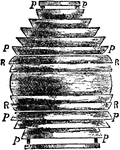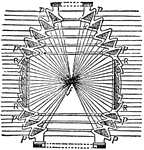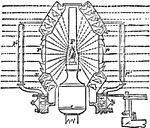Clipart tagged: ‘Reflexion’

Dioptric Light
"First Application of Total Reflexion to Fixed Lights. In this apparatus Fresnel substituted his totally…

Fresnels Revolving Light
"Fresnel's Revolving Light. —In this form of revolving light the central burner is surrounded by annular…

Fresnels Revolving Light
"Fresnel's Revolving Light. —In this form of revolving light the central burner is surrounded by annular…

Fresnels Revolving Light
"Fresnel's Revolving Light. —In this form of revolving light the central burner is surrounded by annular…

Fresnels Revolving Light
"Fresnel's Revolving Light. —In this form of revolving light the central burner is surrounded by annular…

Reflecting Prism
"Fresnel next conceived the admirable improvement of employing the principle of "total" or internal…

Straight Prisms
"Condensing Straight Prisms.—These, either by reflexion or refraction or both, cause a ray fr…